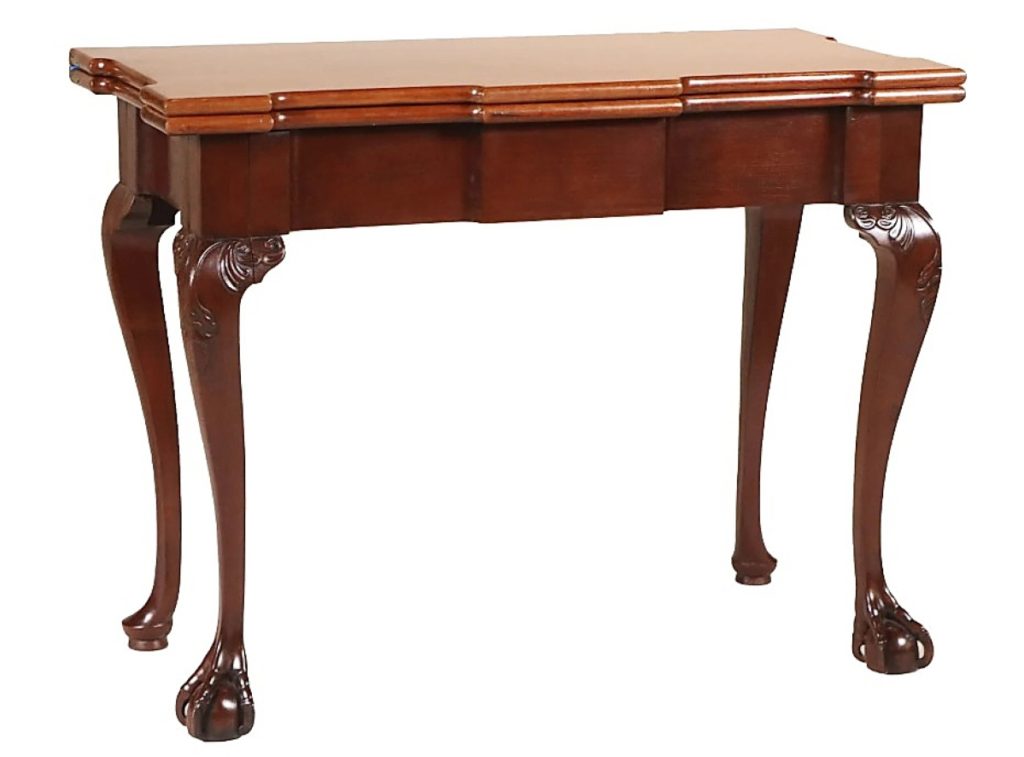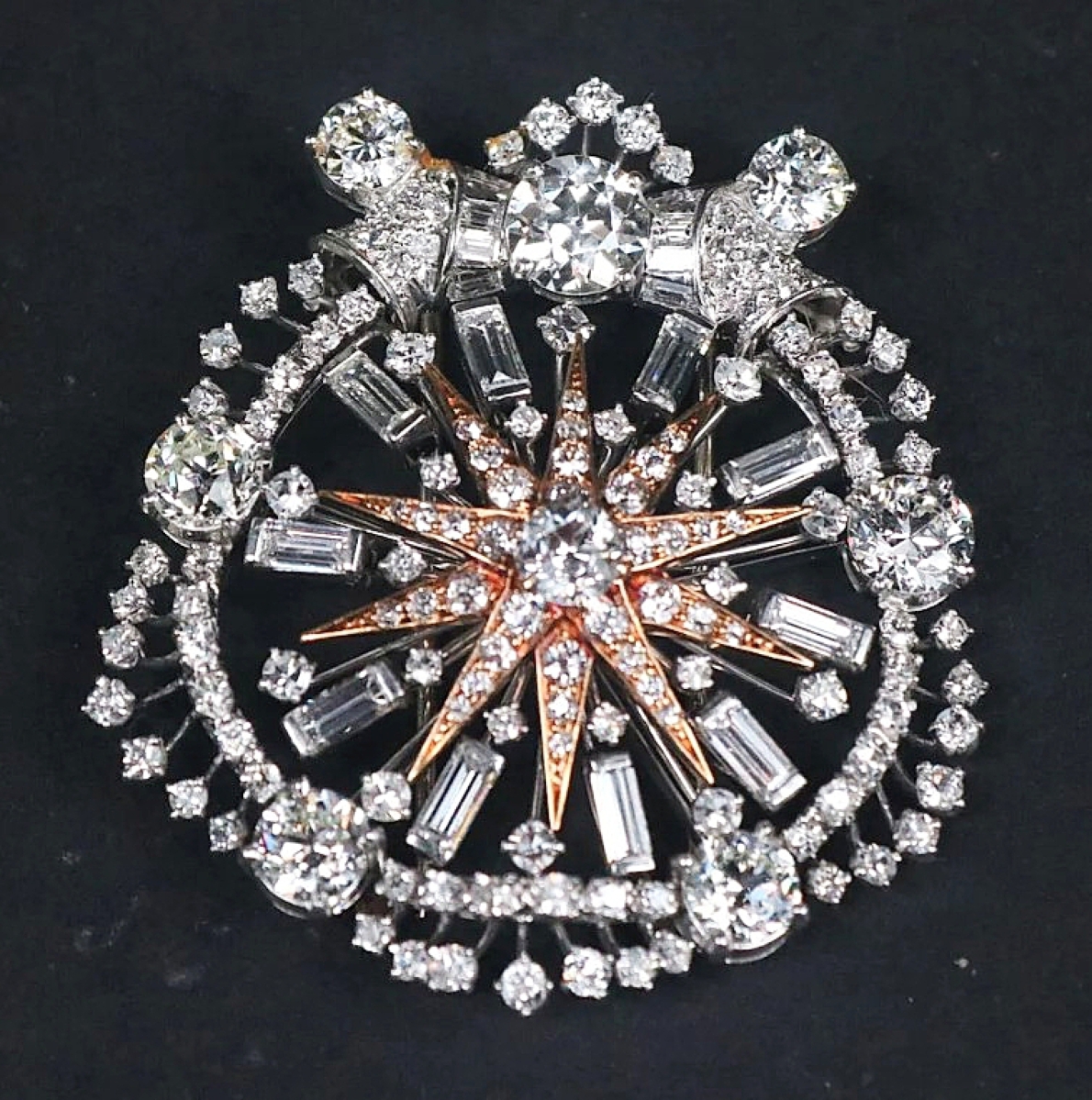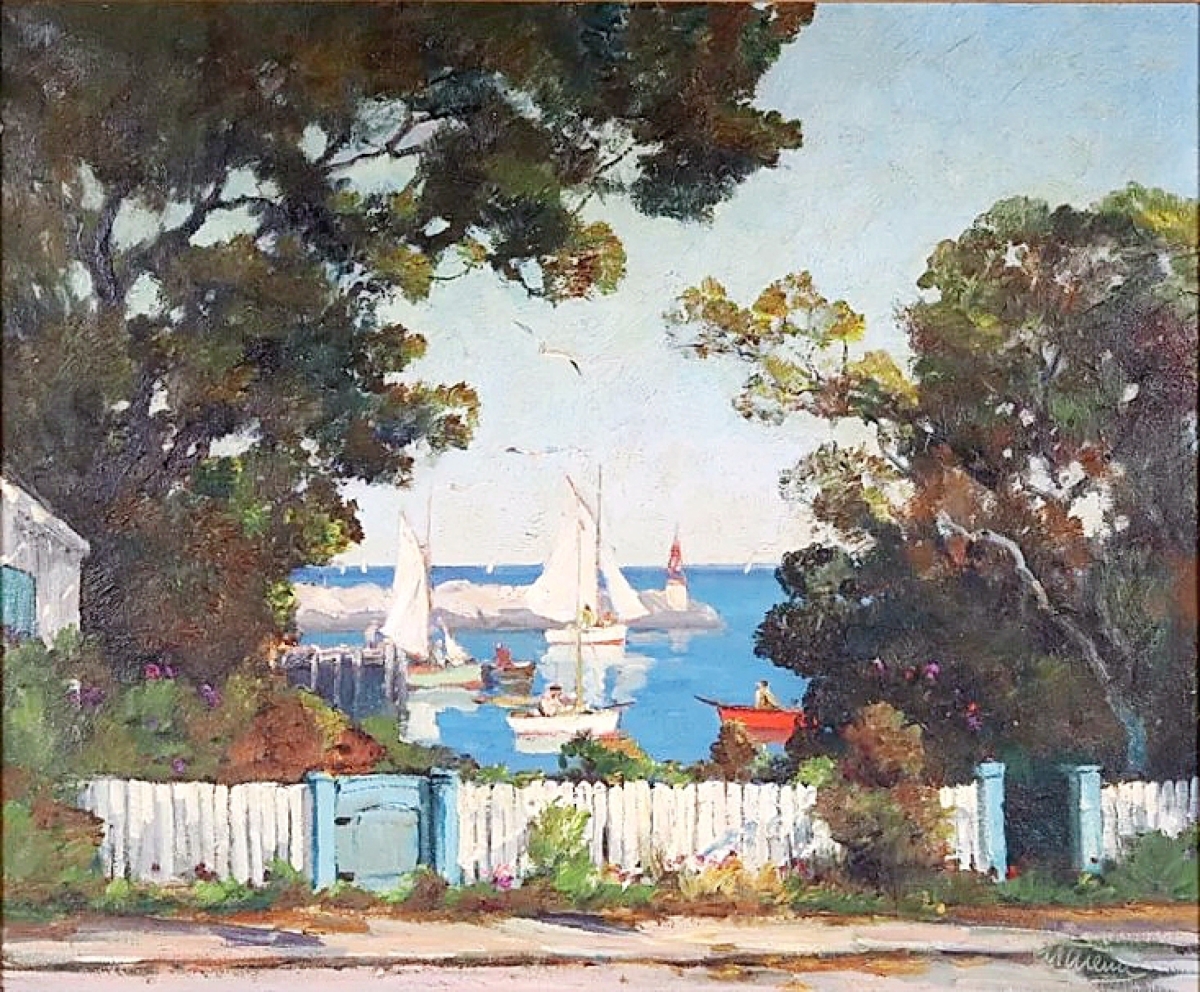
With a strong provenance and documented history, this “Portrait of Martha Otis Bullock” by Joseph Whiting Stock (1815-1855) achieved $52,275.
Review by Z.G. Burnett, Photos Courtesy Nye & Co Auctioneers
BLOOMFIELD, N.J. – Nye & Company Auctioneers started the Memorial Day holiday weekend early with sales May 25 and 26. The first offered only 50 lots from a private collection, though what the sale lacked in quantity was certainly made up in quality, assembled with exceptional focus on the American, English and Continental schools. The second sale contained more than 200 lots from different estates. “We were happy with the results going into Memorial Day Weekend,” said Andrew K. Holter, director of business development. With more than $928,000 in sales over the two days, Nye started the summer on a high note.
The Property from a Private Collection, “the fun stuff,” as Holter described it, was almost all mahogany and oil paintings from an important Midwest collection, with a few material exceptions. Bidders participated both online and over the phone, with most items going into private collections rather than back onto the market. Holter reported that the majority would remain in the United States.
At the head of the lots was a carved mahogany Chippendale card table, its decorated cabriole legs terminating in highly desirable open-talon feet. Unlike standard claw-and-ball feet, the talons on this example are undercut, a painstaking process displaying a special level of skill and craftsmanship. The table is one of only nine known in this blockfront form and is in remarkable condition.

The top lot of the day’s second sale at an exponential rate, this Art Deco bracelet sold for $71,955 after bedazzling many bidders.
Another table in this form with more floriate palmette and leaf knee carving exists in the Rhode Island Furniture Archive at the Yale University Art Gallery, and is attributed to John Townsend (1732/33-1809), circa 1760-65. Possibly made by Benjamin Baker of Newport, R.I. (1735-1822), circa 1760 to 1770, this table had an unbroken line of provenance dating from the Eighteenth Century up to the most recent collection. Its new owner was “very excited to have [the table],” and it is one of very few in private hands. It sold for $307,500.
Another Chippendale table from Philadelphia, circa 1760-80, was among the top lots, six spots down the line and exhibiting claw-and-ball feet with webbing between the toes. The tilt top was more appetizing, known as “pie crust” due to the table’s carved mahogany edge. It sold for $14,760.
The second highest lot was even more of an Americana celebrity, if not for its artist than for its provenance and previous selling price. The sitter of “Portrait of Martha Otis Bullock,” painted circa 1841-42 by Joseph Whiting Stock (1815-1855), was once believed to be Martha Randall, wife of Otis Bullock Jr of Warren, R.I. However, Stock’s own journal revealed it was their daughter that he painted at four years old, as Mrs Bullock had died shortly after her birth. The portrait descended in the Bullock family, hanging in the same house on Benefit Street in Providence for decades. It was acquired by dealers Marguerite (1927-2019) and Arthur Riordan of Stonington, Conn., for their private collection. During this time, it was exhibited in a Stock retrospective at the Smith College Museum of Art and a show at Berry Hill Galleries, N.Y., in 1997.

The star of the private collection sale, this rare carved mahogany table with pierced open-talon feet opened to $307,500.
In 2008 Christie’s sold the painting as part of the Riordan collection, more than doubling the high estimate to achieve $173,000. This sale gave “Martha” the distinction of being one of the highest priced Stock portraits sold at auction. With Nye, the portrait sold again for $52,275 and satisfactorily exceeded its high estimate. Bidding was “hotly contested on multiple phone lines,” and went to a trade bidder on behalf of a private American collector.
Furniture was strong in this sale. A Louis XVI-style parquetry-inlaid cylinder desk created by François Linke (1855-1946) circa 1880-1900 achieved the third highest price, selling for just under $19,700. The desk was based on a model designed in 1893 but the candle arms are unusual to this form, and its green leather writing surface on the interior was only available after 1901. At this time, Linke was adapting the fluidity of Eighteenth Century furniture styles to the exuberant lines of Art Nouveau pieces, and his work exploded in popularity following his submission to the 1900 World’s Fair Exhibition in Paris.
The Rococo Revival was represented with two later rosewood chairs in the Cornucopia pattern, circa 1850-60 both attributed to John Henry Belter (1804-1863). Not sold as a pair, the chairs were the fourth and sixth highest lots, achieving $18,450 and $14,760. The first was more elaborately carved, with a pierced crest rail and bouquet knee decorations. The second could not be described as simpler in design, but less lavish enough to distinguish it from the other chair. Belter was known for his technique of processing laminated rosewood layers, shaped in molds through steam heating, then carving them into the desired shape. These chairs were a result of that process.

Attributed to John Henry Belter (1804-1863), this carved and laminated rosewood chair seated $18,450.
Between the chairs was a tall Daum Nancy glass vase featuring a winter scene with black birds on frosted glass, heightening the illusion of a snowy day. This is one of the maker’s most valuable and recognizable themes. Like all Daum glass, the vase was signed on the base with the cross of Lorraine. Originally a standard glass factory owned by their father, brothers Auguste and Antonin Daum took over and began to experiment with art glass in the 1890s. They debuted their cameo glass for which the company is known for at the Chicago World’s Fair in 1893, a technique used in creating this vase along with enamel decoration. The vase sold for just over $17,200.
A categorical outlier of the sale and of the top lots was a Twentieth Century “Summertime, Rockport” painting by Anthony Thieme (1888-1954). Born in Rotterdam, Thieme traveled widely after studying at the Academie of Fine Arts, and then at the Royal Academy at the Hague. He became a stage designer in New York City, Europe and later in South America. Upon returning to the United States for a commission in Boston, he married and moved to Rockport, Mass., in 1929. His paintings and etchings appear frequently on the auction circuit and three more of his works were available in the sale; this example sold for $14,760.
The day’s second Estate Treasures sale featured a broader selection from multiple collections and origins. The highest selling lot by far was an Art Deco platinum diamond bracelet. Supported by an interlocking bezel network of round brilliant, marquise and baguette cut white diamonds, the center stone was a fancy yellow emerald cut diamond, weighing approximately 5.93 carats. The bracelet came from a New Jersey estate and generated great interest, ultimately selling for $71,955 to a phone bidder. Jewelry featured heavily in the top lots: a platinum and yellow gold starburst brooch sold for $13,530 to a private collection, and an estate emerald and diamond ring realized almost $8,000 from a dealer.

Cameo and enameled glass vase from Daum Nancy with prominent black bird theme, sold for $17,200.
Fine art balanced out the top lots, including a scene of two women by Edward Alfred Cucuel (1875-1954). Born in Pasadena, Calif., Cucuel studied in France and eventually settled in Munich, where he began to practice plein-air painting and gained membership to artistic societies. He returned to Pasadena for good in 1939 until his death. Idyllic outdoor scenes such as that of this painting are typical to Cucuel, and it sold for $18,450.
Two examples of animal art also featured prominently in this sale. The first was a portrait of two whippets by William Skilling (1862-1964), a reoccurring motif in his work, which sold for $9,840. The other was a study of sleeping pigs by Dutch old master Paulus Potter (1625-1654) that realized almost six times its high estimate at $4,000.
Prices quoted include the buyer’s premium as reported by the auction house. Nye’s next main auction will be conducted July 13-14. For more information, www.nyeandcompany.com or 973-984-6900.




















